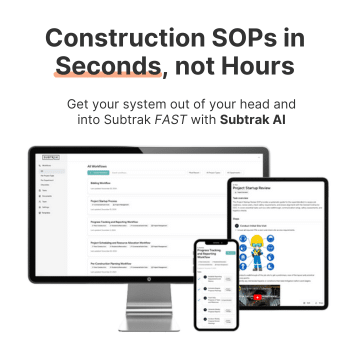Estimating Process for Flooring
The Estimating Process workflow helps flooring contractors prepare reliable bids by accurately projecting costs. It includes reviewing plans, quantifying materials, calculating labor, and validating supplier or subcontractor quotes. Managers confirm estimates align with budgets and profitability targets. By following this workflow, flooring companies reduce mistakes, protect margins, and improve efficiency. Clients benefit from transparent, trustworthy proposals. Teams gain accountability with documented assumptions and structured approvals. With this workflow in place, flooring contractors can strengthen professionalism, improve efficiency, and deliver projects more reliably while ensuring accurate, competitive estimating practices across projects.
Review the RFQ, bid invitation, or client inquiry
Gather project details: plans, specs, site conditions, and schedule
Conduct a site visit if needed to assess access, logistics, and risks
Break down scope into key trades, phases, or cost categories
Quantify materials, labor, equipment, and subcontractor needs
Request quotes from suppliers and subcontractors
Apply standard labor rates and productivity factors
Add markups for overhead, profit, and contingency
Review for completeness, accuracy, and alignment with scope
Prepare and format the estimate into a client-facing proposal
Review with project manager or leadership for approval
Submit proposal to client by due date
Log estimate in tracking system and follow up for feedback
Archive estimate for future use or comparison
Review the RFQ, bid invitation, or client inquiry
Gather project details: plans, specs, site conditions, and schedule
Conduct a site visit if needed to assess access, logistics, and risks
Break down scope into key trades, phases, or cost categories
Quantify materials, labor, equipment, and subcontractor needs
Request quotes from suppliers and subcontractors
Apply standard labor rates and productivity factors
Add markups for overhead, profit, and contingency
Review for completeness, accuracy, and alignment with scope
Prepare and format the estimate into a client-facing proposal
Review with project manager or leadership for approval
Submit proposal to client by due date
Log estimate in tracking system and follow up for feedback
Archive estimate for future use or comparison
👈 Use this SOP template inside Subtrak
Edit with AI. Customize in seconds. Store and share all your SOPs and checklists in one place.
